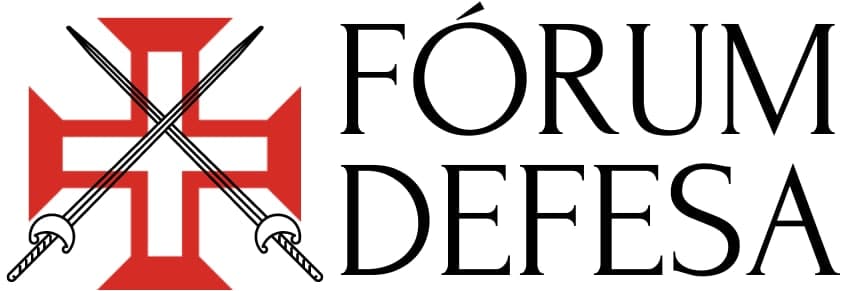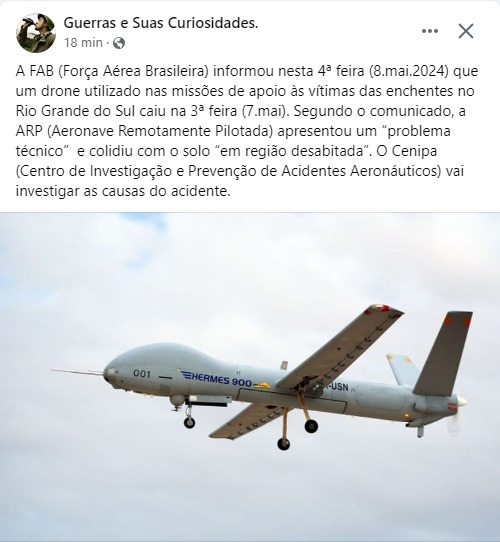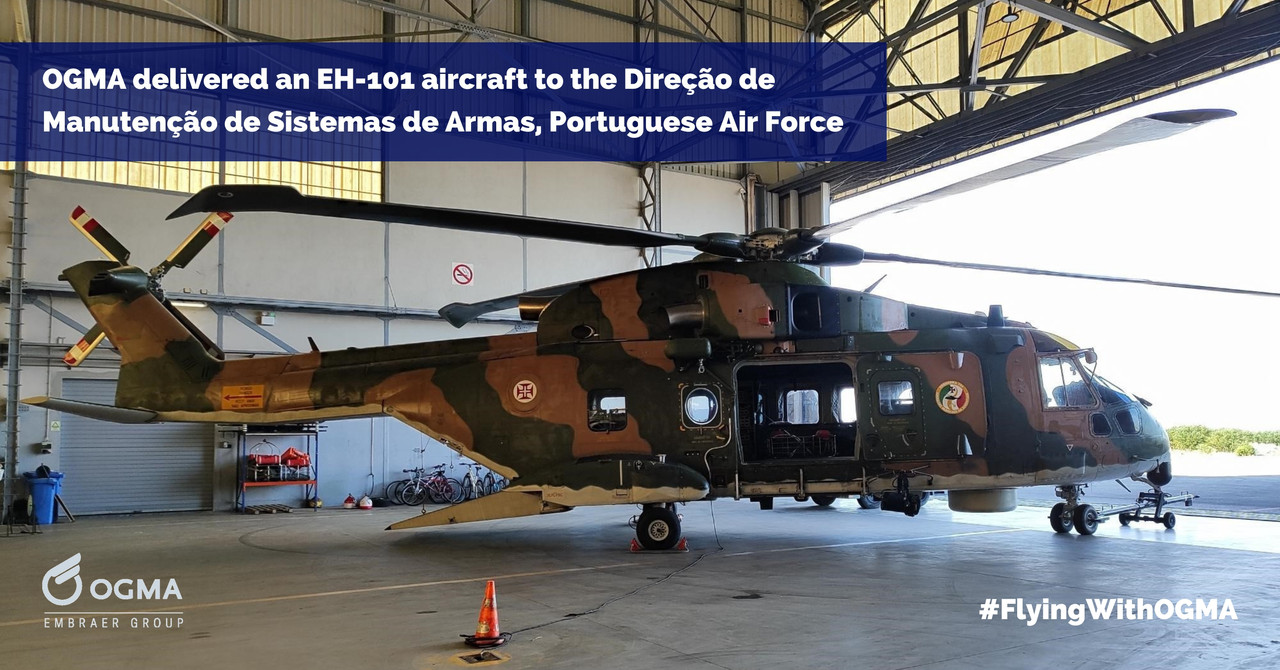1
Força Aérea Portuguesa / Re: F-35A Lightning II na FAP
« Última mensagem por Cabeça de Martelo em Hoje às 05:52:04 pm »Com patrocínio Saab:
Sweden goes back to the drawing board for a next-gen warplane
By Elisabeth Gosselin-Malo
MILAN — Amid a rush within NATO to rally around next-generation combat aircraft, new alliance member Sweden is taking a pause to assess what’s next for its lineage as a warplane-producing country.
The Nordic state in 2022 suspended its flirtation with one of Europe’s two marquee airpower efforts, the Global Combat Air Programme, an initiative led by the U.K., Italy and Japan that seeks to deliver a sixth-generation fighter capability by 2035.
Fast forward to today, and Sweden’s industrial champion Saab is freshly under contract with the Ministry of Defense’s equipment branch, dubbed FMV, to conduct “conceptual studies” on future fighter systems — military jargon for starting at square one.
Saab has managed to secure a share of the global warplane market with the Gripen family of aircraft. The decades-long work has spawned an industrial ecosystem in aerospace engineering that political leaders hope to bring to bear in the NATO alliance.
Next-generation air power concepts on both sides of the Atlantic envision a move away from traditional fighter jets steered by humans as the central pillar of future air forces. Instead, nations are fine-tuning ideas for a networked hodgepodge of flying objects at various altitudes that can be synchronized at the push of a button to overwhelm enemy forces.
A key factor in those considerations is forging a multinational industrial base that can make it happen. For Europeans, that means consolidating workshare around critical aviation technologies while trying to preserve enough national know-how as a hedge against crises to come, an issue certain to be on the minds of decision-makers in Stockholm.
“It has been a successful story so far [for Sweden’s jet-manufacturing chain] and we are looking forward to the future,” Maj. Gen. Jonas Wikman, chief of the Swedish Air Force, told Defense News. He referred to the newly contracted warplane studies as a “journey to figure out what the next steps are for us.”
“What the concept studies are allowing us to do is to have the freedom to decide what suits us best and the freedom to invest in capabilities that make sense to us,” Wikman said.
Yet another program?
Sweden’s decision to take a pause to determine its own requirements has brought about a guessing game across the defense industry regarding what the country’s next move might be.
Will Stockholm try to rejoin GCAP through Saab in the future? Could it team up with the rival program, the Future Combat Air System led by France, Germany and Spain? Or will it opt to build and develop its own fighter with other partners? Might it simply acquire an existing fighter when the time comes?
“Nothing has been decided yet and won’t be decided until at the very least the beginning of the next decade,” Wikman said. “No matter the direction we opt to go in, Swedish industry will always be involved.”
In the mix of options, the emergence of yet another fighter program in Europe is unlikely because of the enormous investment involved, Douglas Barrie, a senior fellow for military aerospace at the London-based International Institute for Strategic Studies, told Defense News.
“Saab and the FMV are looking at all possible options, but I wouldn’t put the emergence of a third European crewed combat aircraft project particularly high in terms of outcomes,” he said. Instead, Stockholm could seek to tack onto a collaboration in an effort to spread the research and development costs, he added.
Affordability is a major challenge to programs like FCAS and GCAP, with high-tech ambitions driving the life-cycle costs into the tens of billions of dollars or more.
To put the amounts required into perspective, as of last year, the U.K. pledged to spend around $2.5 billion on GCAP’s initial research and observation stage alone, an amount equivalent to roughly one-fourth of Sweden’s planned 2024 defense budget.
Whichever path leaders in Stockholm decide to take, there is such a thing as a uniquely Swedish approach to combat airplanes that officials will likely want to retain, according to Justin Bronk, a senior research fellow at the London-based RUSI think tank.
“Sweden is likely to stick to its traditional areas of design and technology strength in the combat air design space during any next-gen program,” he said. Its features include “designing comparatively small, and therefore, efficient aerodynamic airframes; electronic warfare suites; rapid software iteration; and ease of maintenance.”
Gripen DNA
Considering the Gripen fighter will be the backbone of the Swedish Air Force for decades to come, with plans to operate the latest variant, the Gripen E, until 2060, some of its design tenets are expected to bleed into any future Swedish fighter ideas.
“The easy upgradability, robustness allowing for disperse operations from highways, and flight hour costs – these are all characteristics that are a great foundation for a starting point when looking into the next fighter system,” Peter Nilsson, head of Saab’s business unit for advanced programs, told Defense News.
Sweden’s national emergency plans dictate fighter aircraft must be able to use roads as makeshift runways in the event of a crisis.
At a media briefing during the Singapore Airshow in February, Saab’s chief marketing officer, Mikael Franzén, said due to the current threat level in Sweden, the country would operate the Gripen C/D variant for longer than anticipated.
“The C/D versions are to be retired between 2035 and 2040, or beyond, so that the Air Force does not have a dip in readiness and retains full capability during this re-armament period,” Franzén told reporters.
There are now more than 21 operational Gripen E models globally, including test models, and 35 aircraft in production, according to the company.
Franzén also said the Swedish company had improved every system in older C/D models under the Gripen E program, including an upgraded electronic warfare suite and the ability to carry three times more armaments.
When it comes to a future fighter system, Sweden does not plan to go it alone.
“We have a long heritage of international collaboration and will continue working in that way — the Gripen is truly an international fighter, but built in Sweden,” said Saab’s Nilsson. “We’ll continue working with partners from other countries.”
At this point, the studies under contract with the defense ministry are meant to illuminate the trade space in which Swedish leaders will make decisions later on. Focus areas include technology analysis, partnership opportunities, logistics and industrial implications, as well as digital and physical testing of capabilities, according Nilsson
Some high-tech areas of interest Saab plans to explore are a mix “between manned and unmanned systems as well as disruptive technologies,” he said.
A unique aspect of Saab’s vision of fighter jets is the company’s specialization on counter-stealth technology, which is the discipline of detecting aerial objects designed to be concealed from radar.
At an air warfare conference organized in March by the RUSI think tank, Jonas Grönberg, Saab’s director of strategy for fighter aircraft, said that given the fast-paced development of software and hardware systems for signals processing, stealth fighters are bound to increasingly be more discoverable by radars.
“Some military trends we’re seeing influence electronic warfare are radar threats regaining importance and the re-emergence of surveillance radars at low-frequency bands,” he added.
Some older radars function at much lower frequency ranges, which means their wavelengths are considerably longer and capable of effectively spotting most stealth aircraft.
An unmanned companion
Sweden, like other countries, is considering the addition of a drone to accompany Gripen fighters even before plans for a next-gen fighter are hatched. The idea is conceptually known among air forces as “loyal wingman,” a reference to an unmanned helper which pilots can task mid-flight to attack targets, collect intelligence or act as a decoy.
In 2022, Saab’s concept for a supersonic loyal wingman broke cover as part of an academic paper presented by a company employee at the International Council of the Aeronautical Sciences in Stockholm.
While little is known regarding the status of the technology today, the document states it was initially developed under Saab’s participation in the U.K.-led program now known as GCAP. The wingman was designed for combat with a low radar signature profile, to fly at high speeds and to conduct long-range air-to-air battles.
Saab, for its part, is readying its workforce for the pivotal next-gen study. For one, the company has equipped the unit tasked with the project to have “full fighter system capability,” and hiring is underway to beef up the engineer ranks, Nilsson said.
https://www.defensenews.com/global/europe/2024/05/06/sweden-goes-back-to-the-drawing-board-for-a-next-gen-warplane/
Sweden goes back to the drawing board for a next-gen warplane
By Elisabeth Gosselin-Malo
MILAN — Amid a rush within NATO to rally around next-generation combat aircraft, new alliance member Sweden is taking a pause to assess what’s next for its lineage as a warplane-producing country.
The Nordic state in 2022 suspended its flirtation with one of Europe’s two marquee airpower efforts, the Global Combat Air Programme, an initiative led by the U.K., Italy and Japan that seeks to deliver a sixth-generation fighter capability by 2035.
Fast forward to today, and Sweden’s industrial champion Saab is freshly under contract with the Ministry of Defense’s equipment branch, dubbed FMV, to conduct “conceptual studies” on future fighter systems — military jargon for starting at square one.
Saab has managed to secure a share of the global warplane market with the Gripen family of aircraft. The decades-long work has spawned an industrial ecosystem in aerospace engineering that political leaders hope to bring to bear in the NATO alliance.
Next-generation air power concepts on both sides of the Atlantic envision a move away from traditional fighter jets steered by humans as the central pillar of future air forces. Instead, nations are fine-tuning ideas for a networked hodgepodge of flying objects at various altitudes that can be synchronized at the push of a button to overwhelm enemy forces.
A key factor in those considerations is forging a multinational industrial base that can make it happen. For Europeans, that means consolidating workshare around critical aviation technologies while trying to preserve enough national know-how as a hedge against crises to come, an issue certain to be on the minds of decision-makers in Stockholm.
“It has been a successful story so far [for Sweden’s jet-manufacturing chain] and we are looking forward to the future,” Maj. Gen. Jonas Wikman, chief of the Swedish Air Force, told Defense News. He referred to the newly contracted warplane studies as a “journey to figure out what the next steps are for us.”
“What the concept studies are allowing us to do is to have the freedom to decide what suits us best and the freedom to invest in capabilities that make sense to us,” Wikman said.
Yet another program?
Sweden’s decision to take a pause to determine its own requirements has brought about a guessing game across the defense industry regarding what the country’s next move might be.
Will Stockholm try to rejoin GCAP through Saab in the future? Could it team up with the rival program, the Future Combat Air System led by France, Germany and Spain? Or will it opt to build and develop its own fighter with other partners? Might it simply acquire an existing fighter when the time comes?
“Nothing has been decided yet and won’t be decided until at the very least the beginning of the next decade,” Wikman said. “No matter the direction we opt to go in, Swedish industry will always be involved.”
In the mix of options, the emergence of yet another fighter program in Europe is unlikely because of the enormous investment involved, Douglas Barrie, a senior fellow for military aerospace at the London-based International Institute for Strategic Studies, told Defense News.
“Saab and the FMV are looking at all possible options, but I wouldn’t put the emergence of a third European crewed combat aircraft project particularly high in terms of outcomes,” he said. Instead, Stockholm could seek to tack onto a collaboration in an effort to spread the research and development costs, he added.
Affordability is a major challenge to programs like FCAS and GCAP, with high-tech ambitions driving the life-cycle costs into the tens of billions of dollars or more.
To put the amounts required into perspective, as of last year, the U.K. pledged to spend around $2.5 billion on GCAP’s initial research and observation stage alone, an amount equivalent to roughly one-fourth of Sweden’s planned 2024 defense budget.
Whichever path leaders in Stockholm decide to take, there is such a thing as a uniquely Swedish approach to combat airplanes that officials will likely want to retain, according to Justin Bronk, a senior research fellow at the London-based RUSI think tank.
“Sweden is likely to stick to its traditional areas of design and technology strength in the combat air design space during any next-gen program,” he said. Its features include “designing comparatively small, and therefore, efficient aerodynamic airframes; electronic warfare suites; rapid software iteration; and ease of maintenance.”
Gripen DNA
Considering the Gripen fighter will be the backbone of the Swedish Air Force for decades to come, with plans to operate the latest variant, the Gripen E, until 2060, some of its design tenets are expected to bleed into any future Swedish fighter ideas.
“The easy upgradability, robustness allowing for disperse operations from highways, and flight hour costs – these are all characteristics that are a great foundation for a starting point when looking into the next fighter system,” Peter Nilsson, head of Saab’s business unit for advanced programs, told Defense News.
Sweden’s national emergency plans dictate fighter aircraft must be able to use roads as makeshift runways in the event of a crisis.
At a media briefing during the Singapore Airshow in February, Saab’s chief marketing officer, Mikael Franzén, said due to the current threat level in Sweden, the country would operate the Gripen C/D variant for longer than anticipated.
“The C/D versions are to be retired between 2035 and 2040, or beyond, so that the Air Force does not have a dip in readiness and retains full capability during this re-armament period,” Franzén told reporters.
There are now more than 21 operational Gripen E models globally, including test models, and 35 aircraft in production, according to the company.
Franzén also said the Swedish company had improved every system in older C/D models under the Gripen E program, including an upgraded electronic warfare suite and the ability to carry three times more armaments.
When it comes to a future fighter system, Sweden does not plan to go it alone.
“We have a long heritage of international collaboration and will continue working in that way — the Gripen is truly an international fighter, but built in Sweden,” said Saab’s Nilsson. “We’ll continue working with partners from other countries.”
At this point, the studies under contract with the defense ministry are meant to illuminate the trade space in which Swedish leaders will make decisions later on. Focus areas include technology analysis, partnership opportunities, logistics and industrial implications, as well as digital and physical testing of capabilities, according Nilsson
Some high-tech areas of interest Saab plans to explore are a mix “between manned and unmanned systems as well as disruptive technologies,” he said.
A unique aspect of Saab’s vision of fighter jets is the company’s specialization on counter-stealth technology, which is the discipline of detecting aerial objects designed to be concealed from radar.
At an air warfare conference organized in March by the RUSI think tank, Jonas Grönberg, Saab’s director of strategy for fighter aircraft, said that given the fast-paced development of software and hardware systems for signals processing, stealth fighters are bound to increasingly be more discoverable by radars.
“Some military trends we’re seeing influence electronic warfare are radar threats regaining importance and the re-emergence of surveillance radars at low-frequency bands,” he added.
Some older radars function at much lower frequency ranges, which means their wavelengths are considerably longer and capable of effectively spotting most stealth aircraft.
An unmanned companion
Sweden, like other countries, is considering the addition of a drone to accompany Gripen fighters even before plans for a next-gen fighter are hatched. The idea is conceptually known among air forces as “loyal wingman,” a reference to an unmanned helper which pilots can task mid-flight to attack targets, collect intelligence or act as a decoy.
In 2022, Saab’s concept for a supersonic loyal wingman broke cover as part of an academic paper presented by a company employee at the International Council of the Aeronautical Sciences in Stockholm.
While little is known regarding the status of the technology today, the document states it was initially developed under Saab’s participation in the U.K.-led program now known as GCAP. The wingman was designed for combat with a low radar signature profile, to fly at high speeds and to conduct long-range air-to-air battles.
Saab, for its part, is readying its workforce for the pivotal next-gen study. For one, the company has equipped the unit tasked with the project to have “full fighter system capability,” and hiring is underway to beef up the engineer ranks, Nilsson said.
https://www.defensenews.com/global/europe/2024/05/06/sweden-goes-back-to-the-drawing-board-for-a-next-gen-warplane/

 Mensagens recentes
Mensagens recentes




